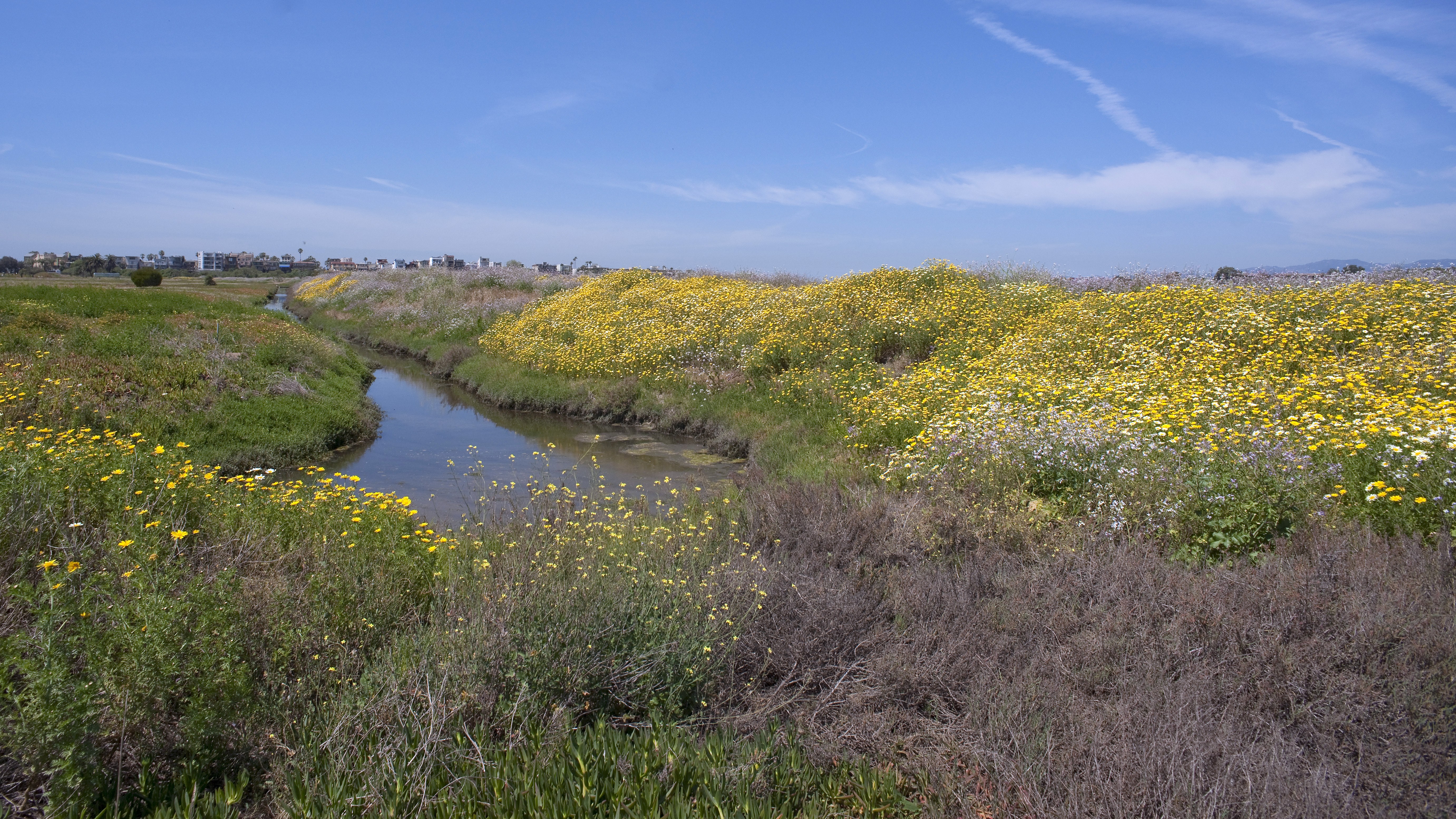7 Natural Wonders of Los Angeles

Ballona Wetlands
By Lenika Cruz
May 4, 2011 9:38 p.m.

California Poppies

La Brea Tarpits

Farmers Market
In the midst of tangled freeways, high-rises and industrial districts, it can be easy for Angelenos to lose touch with the city’s more natural dimensions.
It can also be easy to mythicize nature as an elusive phenomenon rather than something that we can never fully escape.
These natural wonders, while not world wonders like the Great Pyramid of Giza or the Hanging Gardens of Babylon, offer a new way to see and experience the urban sprawl that is Los Angeles.
Farmers Market
The ubiquitous farmers market testifies to California’s ability to provide residents with fresh, local food year-round.
When farmers sell directly to consumers, they contribute to a community’s economic and environmental sustainability.
Farmers markets are great places to browse, shop and enjoy free samples of fruits, nuts, gourmet snacks, ethnic ingredients and other locally produced fare.
Find the Westwood Village farmers market on Wednesdays from 2-7 p.m. on Broxton Avenue.
La Brea Tarpits
One of the world’s largest urban excavations of fossils, the La Brea Tar Pits of downtown Los Angeles juxtapose the prehistoric with the modern.
Since the early 1900s, millions of plant and animal fossils from 10,000 to 40,000 years ago have been excavated from the pits of asphalt. Visitors to the George C.
Page Museum can see fossils of saber-toothed cats, dire wolves and other extinct species. Visitors to the active excavation sites can also see asphalt seeping up through the ground.
Take the Metro 20 from Wilshire and Westwood boulevards to Curson Avenue.
Mount Wilson
Mount Wilson’s fame in the astronomy world is partly because it has the steadiest air in North America, allowing for valuable interferometer readings.
Some of the early 20th century’s most revolutionary discoveries in astrophysics were made through the lenses of the Hooker and Hale telescopes, including Edwin Hubble’s observation that the universe is expanding.
Though increasing light pollution from the city has prevented nighttime study, solar observation continues.
Take the I-210 E to Sunland Boulevard.
Ballona Wetlands
As with many of the natural wonders of Los Angeles, the Ballona Wetlands still exist because of environmentalist and state efforts to protect them from the effects of urbanization.
Until the early 19th century, the Ballona Wetlands spanned 2,000 acres of California coastal areas.
Since then, they have been reduced to about 600 acres.
Once home to the Tongva, an indigenous California people, Ballona functions as a flood buffer for local communities, a life source for flora and fauna at risk of endangerment, a rest stop for millions of migratory birds and a filter for urban runoff traveling through storm-water channels to the Santa Monica Bay.
To get to the Freshwater Marsh, take the Big Blue Bus line 3 from Ackerman/Hilgard Terminal to the intersection at Jefferson and Lincoln boulevards. It is open to the public from dawn to dusk.
Placerita Canyon State Park
Even before the Golden State officially became part of the United States, it showed promise of living up to its nickname.
Less than a decade before a fateful discovery at Sutter’s Mill sparked the California Gold Rush in 1848, a man named Francisco Lopez fell asleep under an oak tree and dreamed that he was floating on a pool of gold. When he awoke, he dug beneath him and found traces of the prized mineral.
While the dream is merely legend, the discovery was real and the first to be documented in California.
The “Oak of the Golden Dream” is now part of Placerita Canyon State Park, which is also home to more than 200 native plant species.
Take I-405 N, I-5 N, exit 162, CA-14, to Placerita Canyon Road.
California Poppies
At the western end of the Antelope Valley, spring means wildflower season, and the state flower is no exception.
From March through May, the reserve becomes blanketed in the brilliant orange of California poppies which, like the other flowers, grow without human intervention.
The mosaic of fragrances and colors offers a respite to those seeking fresh air and a break from city sights.
Visitors can hike trails, picnic and spot desert critters from coyotes to kangaroo rats. Bring lunch, sunscreen and a camera.
The poppies close up on cold days, so check the weather before coming.
Take I-405 N, then I-5 N, merge with CA-138A, make right on 170th Street, left on Lancaster Road. End at reserve.
Griffith Park
Though well-known and an urban emblem, Griffith Park offers outdoor experiences for those unable to take trips out of the city.
One of the largest urban parks in California, Griffith Park is home to the L.A. Zoo, the Griffith Observatory, and a merry-go-round.
Visitors can hike, hunt for locations from famous movies and catch a view of the Hollywood sign.
Take I-405 N, US-101 S, slight left CA-134 E, exit 4, left on Zoo Drive, right on Griffith Park Drive.

